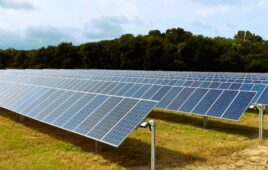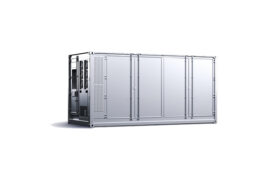Robots infiltrating an industry sounds kind of scary until you learn they’re pretty good at doing tedious jobs that require meticulous data gathering. Robotic technologies are starting to become more commonplace in the solar industry, largely driven by the advanced capabilities of drones.
DNV GL described in the paper “Making Renewables Smarter: The benefits, risks, and future of artificial intelligence in solar and wind” that robots are used in renewables to do the three Ds—tasks that are dangerous, dirty and dull. Flying drones and unmanned aerial vehicles (UAVs) are the most developed robotic technologies in solar, and they have shown to be excellent at site assessment and O&M, providing a level of detail unmatched by ground crews. Module-cleaning robots take care of dirty tasks, usually faster and more effectively than a crew with squeegees and brushes.
There are many drones-as-a-service companies entering the solar market, such as Measure, which has signed large O&M contracts with some major solar asset owners. Aerial thermography can pinpoint problem modules or underperforming strings that often go undetected through regular monitoring systems. One of Measure’s clients claims the drone services will save 30,000 hours of hazardous work each year.
“Autonomous drones with real-time artificial intelligence-supported analysis will become the primary tool for carrying out effective and efficient inspections of wind turbines and solar panels,” said the DNV GL report.
When hiring a drone service company is too much, there are enough drone software providers tapping into the solar market to help solar companies work their own devices. Companies like Scanifly have drone add-ons that cut down on the time to complete residential site assessments and provide quick, accurate roof maps.
Some installation companies are bringing many different robot services in-house. With SunPower’s complete utility-scale solar solution Oasis Power Plant, not only are modules, mounting and monitoring included, but also a drone and a panel cleaning robot. The SunPower Oasis GEO Drone surveys site topography to identify ideal tracker locations. In October 2017, SunPower was the first solar company to receive approval from the U.S. Federal Aviation Agency (FAA) to have automatic access to operate a drone in regulated airspace over controlled airports. SunPower can assess a site anywhere at any time. And then after the project is complete, SunPower says its panel cleaning robot works 20-times faster than manual washing and uses 75% less water.
Robotics—drones specifically—are finally coming into their own in the solar industry, providing ways to more efficiently manage an organization’s resources.






Tell Us What You Think!